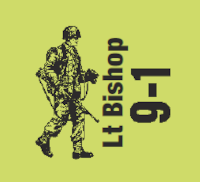
Welcome to a new series covering the basics of Infantry Combat in ASL. In this first installment, I am going to cover some options Infantry has for overcoming enemy AFVs. This installment is short on examples and long on theory. When it comes to tackling unopposed armor, it is more about a holistic approach than it is any one thing. As much as I know some folks would like to see examples, I just don’t think they help in seeing the big picture. And if your task is to find a way to win when your opponent has unopposed armor, seeing the big picture is a fundamental requirement.
I don’t want to mislead you from the outset. Taking on enemy AFVs with Infantry is no easy task. Even when you do everything correctly, your chances of eliminating enemy AFVs are likely not to be in your favor. Still, when you have no other tools to fall back on, it comes down to the poor, bloody Infantry to get the job done. Let’s get stuck in.
Ambush Predators

Your first options for killing AFVs with Infantry comes from “ambush predators.” These can take several forms depending on what scenario designer gives you. First and foremost, you need an ambush. A successful ambush requires a few things:
- An honest assessment of the ambushing unit compared to the enemy AFVs. How does its TK# compare to the AFV’s Armor Factors (AF)? Can it penetrate frontally? From the side? What is the effective range? These will help you in step 2.
- Examine the map and determine likely avenues of approach for enemy AFVs. In the best case, the range of the ambushing shot will be long enough that your asset doesn’t have to worry about accompanying enemy Infantry compromising its position. Can placement of the asset create side shots in likely bypass Locations? What about under-belly hits at likely wall crossing or gully/stream exit Locations?
- Try to influence the enemy into kill zones. This can be done with Obstacles (Wire, Roadblocks, etc), other units, dummy counters, by conducting a fighting withdrawal, or any other premise. Try to create a favorable condition for your assets.
- You, the player, may need to possess nerves of steel. As enemy units surround your (likely HIP) asset, when do you pop him out? Too soon and you may never get all you could have. Too late, and your opponent might wander into your unit’s Location and compromise your ambush.
Infantry Tools Used to Ambush Enemy AFVs
Foremost, Hidden Initial Placement (HIP) is likely to be the most deadly AT weapon available. Just by existing it puts doubt into your opponent’s thinking. Try not to give this unit away by the placement of your other forces, or your opponent might suss out the surprise. Once compromised or revealed, an ambush is usually easy to deal with.
Guns
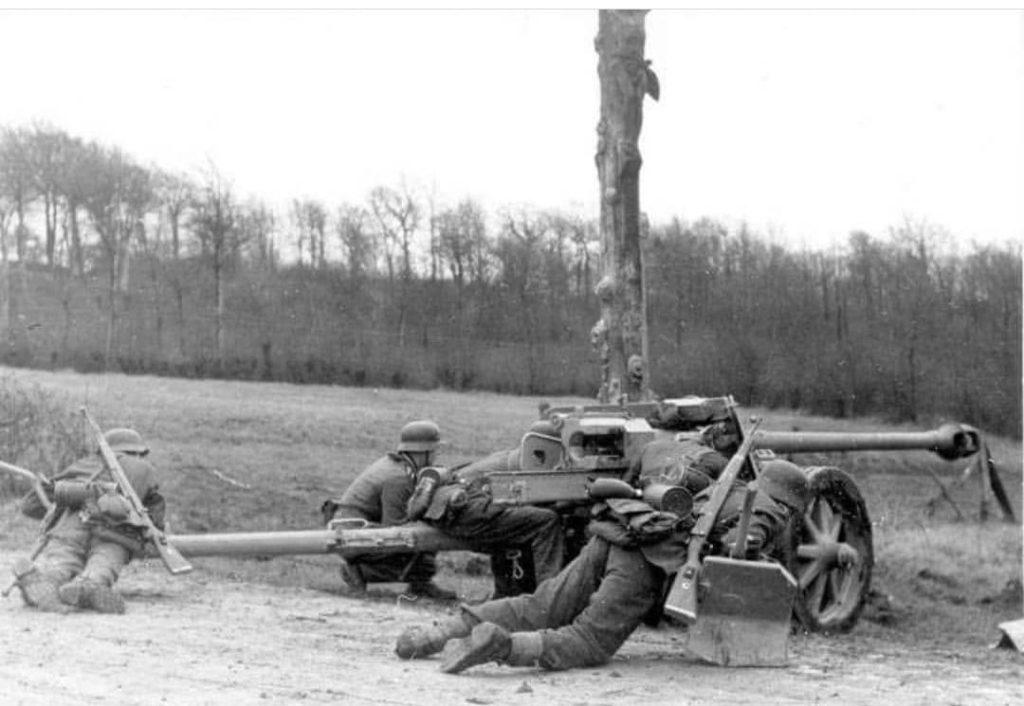
After HIP, the most common tool will be a Gun. I am sure some are thinking “I thought this was about Infantry?!?!” What kind of unit possesses that Gun? Infantry, of course. Guns are the prototypical ambush predator. They are HIP, have a long reach, and quite often have high rates of fire. Pulling a successful ambush with a Gun can be quite rewarding.
LATW
Light Anti-tank Weapons (LATW) are another common ambush tool. The most frequently seen are BAZ/PSK, ATRs, and PIATs (and Panzerfausts (PF) for German units). In the hands of a HIP Half Squad (HS), these close range AT weapons pack a significant punch and can easily knock out an enemy AFV. If really lucky, they can kill an AFV in Defensive Fire and another in Preparation Fire. That won’t happen often, but even one AFV is worth a HS in trade.
Rare and Uncommon Tools
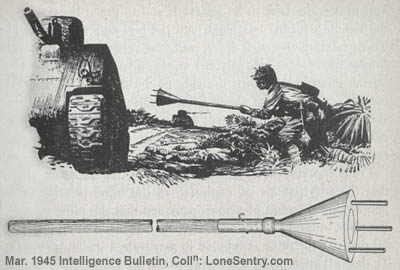
Tank-Hunter Heroes (G1.421, TH-Heroes)/Human Bullets (W3.23)/Suicide Heroes (W6.4) are among less common ambush tools. While each of the Korean War units is very similar to TH-Heroes, I recommend you read the relevant rules to make sure they are used them correctly. Throughout the rest of this document, when I speak about TH-Heroes, I am also talking about Human Bullets and Suicide Heroes.
In scenarios where your opponent has AFVs, TH-Heroes can set up HIP and pop out to attack AFVs. These units may make attempts for Anti-Tank Magnetic Mines (ATMM) and have a base Close Combat Value (CCV) of 5. Take a careful read of G1.421 on how and when they may voluntarily drop HIP to attack. Don’t sleep on CC-Reaction Fire (CCRF) and a MPh charge, even if it is only to draw fire. Also, enemy AFVs cannot roll for Motion based on a TH-Hero’s MFs (G1.423).
Daisy Chain
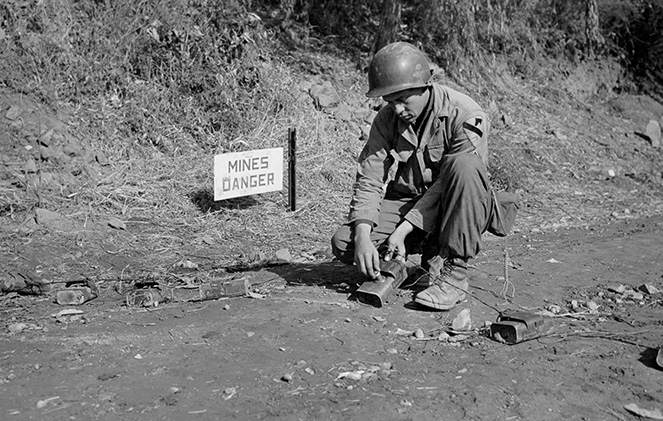
AT Mines are another rare occurrence, but here, I am specifically thinking of Daisy Chains (B28.531). These only appear by SSR and represent a “string” of A-T Mines carried and used like a support weapon. The possessing unit may place the Daisy Chain in an ADJACENT Road Location anytime during an opponent’s MPh, even as the enemy AFV enters the Location. Daisy Chains may also be placed hidden (e.g. HIP) in a Road Location in any Friendly fire phase. The Daisy Chain remains hidden until an enemy unit gains LOS. When an AFV enters the Location containing a deployed Daisy Chain, you make a normal AT Mine attack (B28.51) and resolve accordingly. This includes attacks by mines placed during the AFV’s MPh upon entry into the Location.
A-T Set DC
Perhaps the rarest of A-T assets in ASL. Only Japanese may place an A-T Set DC and only in scenarios set in 1945 against anyone but the Russians (G1.6121). The Japanese may elect to set up their Demo Charges (DC) as an A-T Set DC’s in Road Locations. An A-T Set DC is setup HIP (even in non-Concealment terrain) and is not revealed when an enemy unit gains LOS to it. It is removed if its Location is Searched. It may be detonated only by the unit designated to do so at scenario start.
The A-T Set DC may be detonated when an AFV enters the Location USING the Road. A successfully detonated A-T Set DC eliminates an enemy AFV as a Burning Wreck. Infantry accompanying the AFV using Armored Assault is attacked as if using a Set DC. Veteran players will enter Road Locations using Open Ground cost and stipulate they are not using the Road. Barring an SSR, this will negate any chance of detonating the A-T Set DC so plan accordingly. Also note, detonation is not a Concealment Loss activity. HIP T-H Heroes make nice designated units for a double surprise.
Offboard Artillery (OBA)
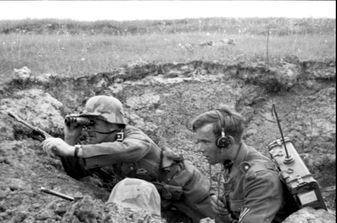
OBA can effectively deal with enemy AFVs if successfully placed on an enemy AFV. I previously wrote about how to use OBA against AFVs in a previous article titled Indirect Fire Against AFVs. OBA is better used to deny space to enemy AFVs and Infantry since it is so cumbersome to get down in a timely manner. I will not cover this much here. I refer you to my earlier article for the mechanics of the attack and leave the rest up to your imagination.
Poor Bloody Infantry
Up to this point, I have kind of cheated. While everything noted is indeed tools of “Infantry” as defined in ASL, it isn’t what most of us think of as “Infantry”. I devote this section to the dog-faces of ASL, the cardboard foot sloggers who do all the heavy lifting for us.
IFT Attacks
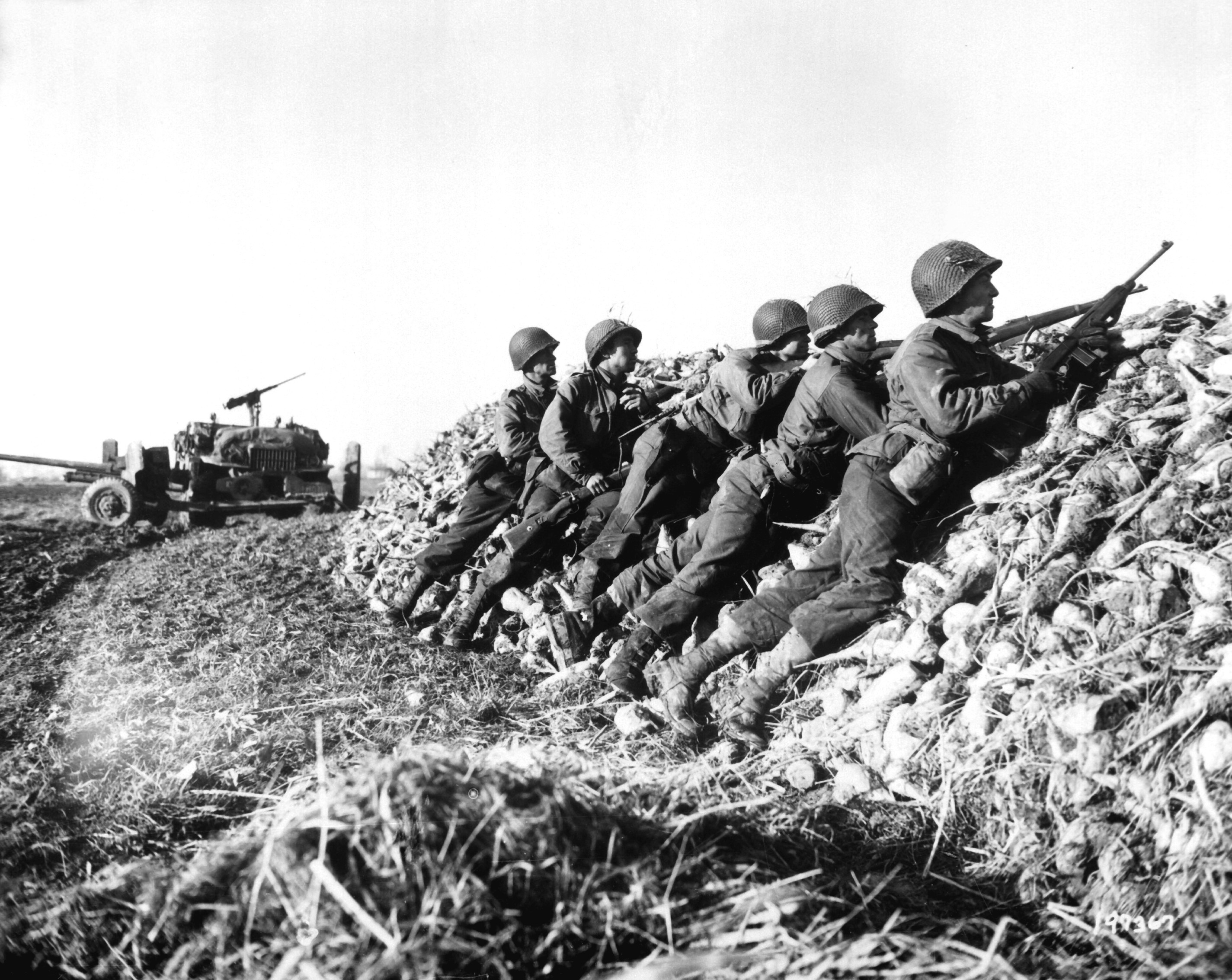
One way for Infantry to defeat AFVs is to attack their vulnerable crews. Most attacks will suffer a +2 CE DRM and be attacking 8 morale Crew but many a crew has failed its Morale check only to end up Stunned. A Stunned AFV automatically buttons up and Stops. If Stunned in the Infantry’s turn, it can be maneuvered on by other assets and easily eliminated.
Even better, an AFV which rolls an Original 12 on a Morale Check suffers Casualty Reduction which automatically Recalls the AFV.
Shocked and Stunned AFVs are vulnerable in CC. If a Shocked/Stunned AFV is attacked in CC, it is considered Immobile and to have no Manned/Usable MG.
MGs as Ordnance
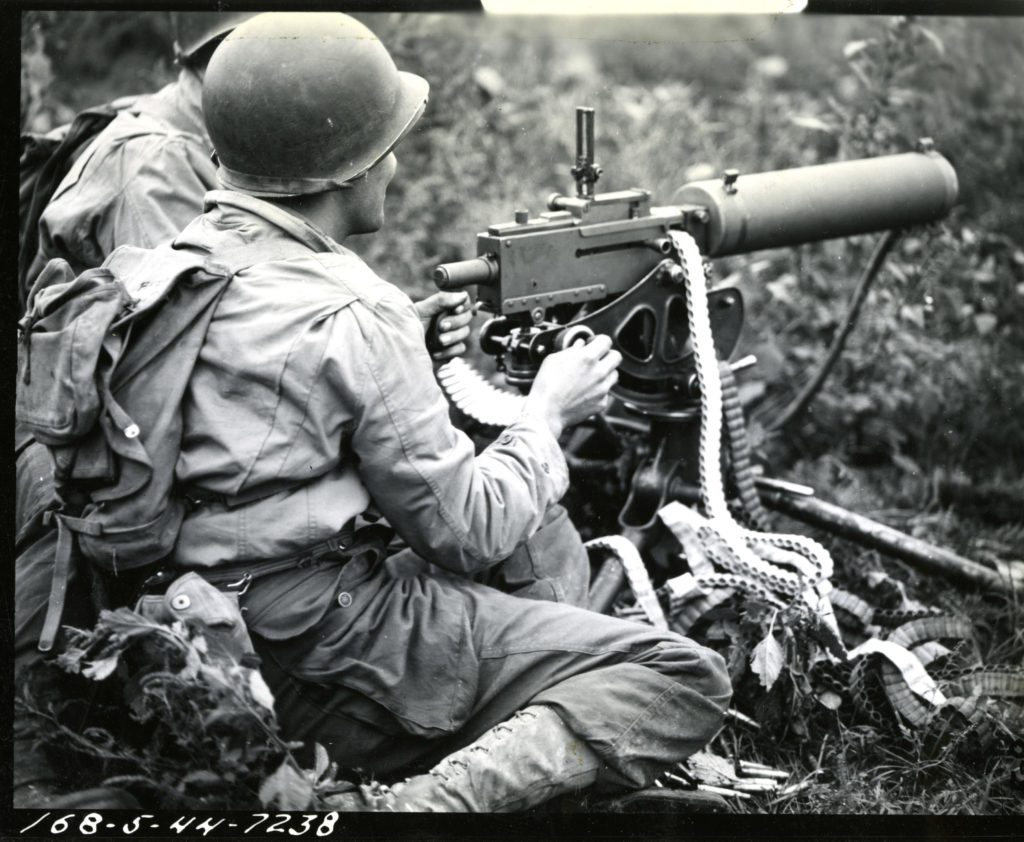
Machine Guns can be fired as Ordnance in order to eliminate enemy AFVs. We use the normal To Hit (TH)/To Kill (TK) process. Leaders can direct the TH attempt of MG attacks. The TH attempt cannot cower and may simultaneously place a fire lane on the TH attempt. Keep this in mind if you are short leaders and have a desperately needed fire lane.
Once a hit is secured, an MG’s Basic TK# is a 4 [EXC: 12.7mm/.50 cal has a Basic TK# of 5]. MG attacks use a round ≤ 25mm. MG attacks at ranges 0 to 1 will add a +2 to the Basic TK#. Attacks at ranges 3 to 6 will add a +1 to the Basic TK#. Against early war AFVs, MG TK attempts can often be nearly as good as another AFV’s attack. Even later in the war, an MG attack into the rear of some AFVs can produce a low odds chance to kill an AFV. I have heard stories of StuG III being eliminated when hit by an MG in the rear.
SW Mortars
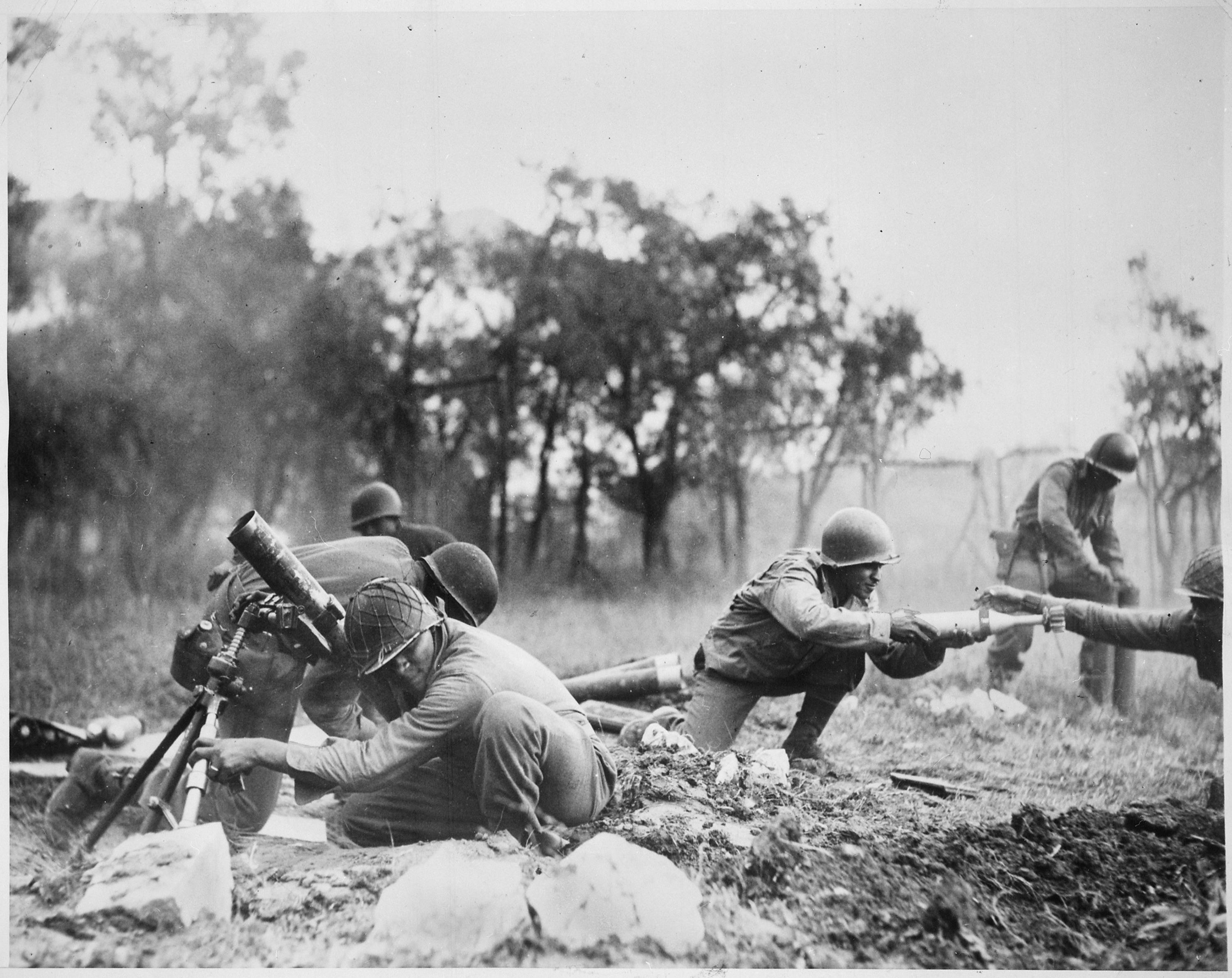
As noted earlier, I already covered Indirect Fire Against AFVs in a previous article. While that article covered OBA and ⅝” mortars, the same principles apply to Support Weapon, ½” counter, mortars. In particular, the 60mm Brandt Mortar used by the Americans and French can be particularly terrifying. With a ROF of 3 and an attack on the IFT 4 column, it is not only a threat to eliminate, Immobilize, or Shock an enemy AFV, it can also threaten to Shock/Stun vulnerable crew. While getting a combat result is not likely as it needs a Final DR 2/3 on the IFT, it still provides Infantry a chance not otherwise available.
Molotov and Flamethrower Attacks
Of course, Molotov Cocktails (MOL) are allowed only by SSR. Sometimes, you can have a Molotov Projector (MOL-P). Resolve these attacks on the HE & Flame TK table and resolved without regard for Armor Factors and with very few modifiers found in footnotes on the bottom of the HE & Flame TK table. These aren’t nearly as devastating as a Panzerfaust and they are only effective in ADJACENT hexes. Still, when there are few tools at hand, these can ruin a tanker’s day. Look for a future article covering this topic more in depth.
Demo Charge
The “hand bag”. A satchel filled with explosives has many uses in ASL. It can breach walls, destroy bridges and buildings, even clear Wire. Oh, it can also kill tanks. When thrown or placed, it has a real chance to kill an AFV. Again, resolve this attack on the HE & Flame TK table. Determine the effectiveness of the DC by rolling on the DC Placement vs. AFV Table. This placement decides which kind of attack–against the Arial Armor Factor, the tank’s Armor Factor, or a Specific-/General Collateral Attack–is conducted against the AFV. Correctly placed, a DC can devastate an AFV.
Close Combat
If all else fails, there is always Close Combat (CC). Infantry must pass a Pre AFV Advance/Attack Task Check (PAATC) to Advance into an AFV’s Location, but once there, it can attack the AFV by comparing its CCV to a DR. If the Final DR is <= half of the CCV, eliminate the AFV as a Burning Wreck. On a Final DR < the CCV, eliminate the AFV without chance for Crew Survival. On a Final DR = to the CCV, the AFV is Immobilized. Immobilization is a two-edged sword for the Infantry as a Stopped AFV holds Infantry in Melee. AFVs are not held in melee, even when Immobilized. The AFV is free to fire at Infantry in its Location in any Friendly Fire Phase. Still, stopping an AFV in its tracks and imposing Target Selection Limits on it is a small slice of ironic justice.
I did a whole series of articles in Defending Against Sleaze Freeze which covers the topics of Street Fighting and CC vs AFVs when entering your unit’s hex. If you want more details, go have a look at those. They are filled with Infantry versus AFV CC examples.
CC Reaction Fire
So this is tough. Survive the Overrun, or the enemy AFV has to opt not to conduct the Overrun and then you can attack back as CCRF. The attack is almost certainly going to be against a Motion/Non-Stopped AFV when attacking back, so the odds of hurting the AFV are going to be pretty slim. Still, if there are no other tools at hand, eliminating an enemy AFV in this manner can be quite demoralizing.
CC Surprises
If in CC versus an AFV and any of these options are available, make sure to keep these in mind:
- Some units may roll for ATMM when attacking AFVs in CC. If successful, the attacking unit receives a -3 DRM when attacking in CC.
- Japanese Infantry squads/half squads may roll for a T-H Hero:
- Before Advancing into CC versus an AFV.
- During the MPh, as CC Reaction Fire, if an enemy AFV enters its Location
- During CCPh if it is the DEFENDER in this attack
- Japanese T-H Heroes may roll for ATMM before attacking in CC
- AFVs using VBM and attacked in CC in that Location are subject to Street Fighting penalties.
- Stunned/Shocked AFVs are Immobile and have no Manned/Usable MG in CC. This makes them particularly vulnerable to CC (-2 DRM).
Obstacles (Wire, Road Block, A-T Ditch, Trenches, Minefields, etc)
The primary goal of obstacles is to influence the movement of the enemy. Every Obstacle should have some sort of firepower over watching it or they are merely inconveniences and not Obstacles. Good placement serves to push the enemy into kill zones.
Remember my first ASL Maxim. Victory Conditions before all else. Everything you do with an Obstacle should be a step towards victory. Delay? Redirect? Destroy? As long as it contributes to victory, it doesn’t matter. Plan accordingly.
Conclusion
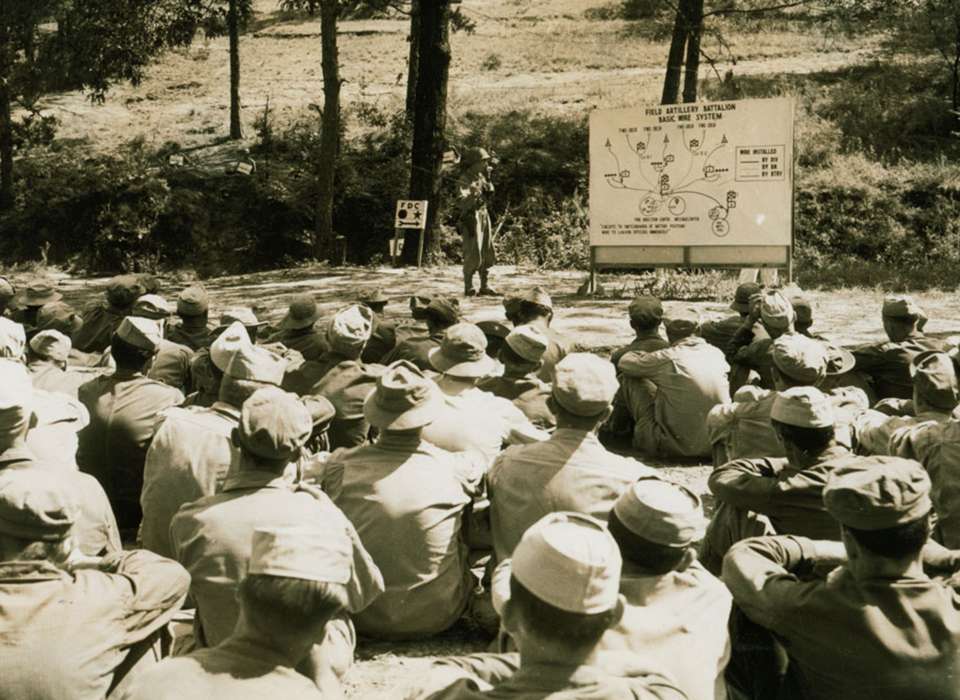
I know this article didn’t have as many rule cites or examples as my readers have come to expect. As I started to write this, I expected to have more examples myself. As I wrote my thoughts down, it became apparent to me that examples wouldn’t make this as clear as I would like. I was surprised by my evolving thinking as I wrote this. I do have a couple “Missing Example” articles in mind discussing some of the topics covered here.
As part of this series, I plan on writing a few “Anti-tank centric” scenario analysis articles. In these articles, I will focus on defending against unopposed armor. I have identified the first scenario. If there is a scenario you would like to see me tackle as part of this, please let me know in the comments below. I suspect I will cover more than one as I am looking for some specific situations to cover concepts I spoke to in this article.
As always, I hope this article helps in some small way. If you have any comments or suggestions please leave a comment below. Until next time. – jim
Additional Reading
Below are additional articles covering the topic. Sadly, it isn’t all inclusive. If you think one is missing, please share the article title and where to find it in the comments below. I cannot recommend Carl Nogueira’s Crosstown Traffic enough.
- The Fine Art of Bushwhackin’, David Ollie, ASL Journal #4
- Crosstown Traffic, Carl Nogueira, ASL Journal #8
- What Do You Do When You Don’t Have A Can Opener, Tate Rogers, ASL Annual ‘97
- The Shape of Things to Come – Shaped Charge Weapons in ASL, Carl Nogueira, Dispatches from the Bunker – Issue #44
- How To Kill Tigers (And Any Other AFV) With Your Bare Hands (Or Whatever Else Is Available) Part One, Two, and Three. Carl Nogueira, Dispatches from the Bunker – Issue #45, #46, #47
- Squad Leader Clinic: Man versus Tank, Jon Mishcon, The General Volume 25, Number 6

